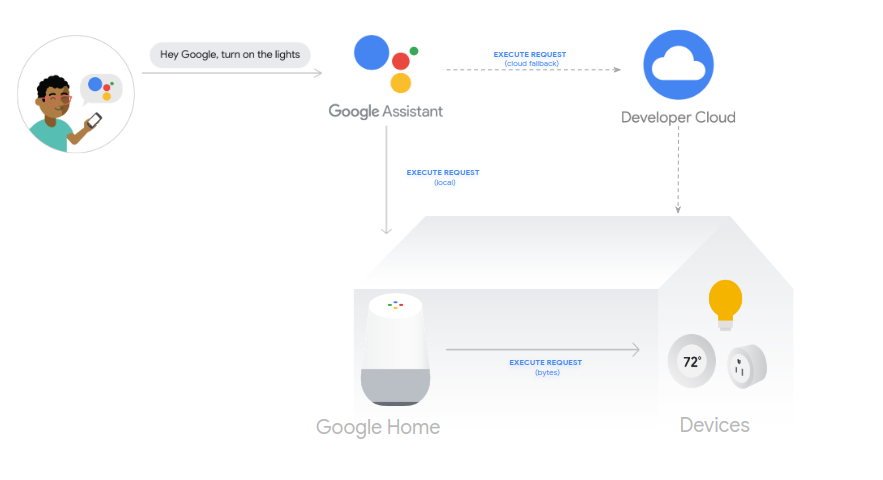Posted by Toni Klopfenstein, Developer Advocate
As more developers onboard to the Smart Home Actions platform, we have gathered feedback about the certification process for launching an Action. Today, we are pleased to announce we have updated our Actions policy to enable developers to more quickly develop their Actions, and to help streamline the certification and launch process for developers. These updates will also help to provide a consistent, cohesive experience for smart device users.
Device quality guidelines
Ensuring each device type meets quality benchmark metrics provides end users with reliable and timely responses from their smart devices.With these policy updates, minimum latency and reliability metrics have been added to each device type guide. To ensure consistent device control and timely updates to Home Graph, all cloud controlled smart devices need to maintain a persistent connection through a hub or the device itself, and cannot rely on mobile devices and tablets.
Along with these quality benchmarks, we have also updated our guides with required and recommended traits for each device. By implementing these within an Action, developers can ensure their end users can trigger devices in a consistent manner and access the full range of device capabilities. To assist you in ensuring your Action is compliant with the updated policy, the Test Suite testing tool will now more clearly flag any device type or trait issues.
Safety and security
Smart home users care deeply about the safety and security of the devices integrated into their homes, so we have also updated our requirements for secondary user verification. This verification step must be implemented for any Action that can set a device in an unprotected state, such as unlocking a door, regardless of whether you are building a Conversational Action or Smart Home Action. Once configured with a secondary verification method, developers can provide users a way to opt out of this flow. For any developer wishing to include an opt-out selection to their customers, we have provided a warning message template to ensure users understand the security implications for turning this feature off.
For devices that may pose heightened safety risks, such as cooking appliances, we require UL certificates or similar certification forms to be provided along with the Test Suite results before an Action can be released to production.
Works With 'Hey Google' badge
These policy updates also will affect the use of the Works With Hey Google badge. The badge will only be available for use on marketing materials for new Smart Home Direct Actions that have successfully integrated any device types referenced.
Any Conversational Actions currently using the badge will not be approved for use for any new marketing assets, including packaging/product refreshes. Any digital assets using the badge will need to be updated to remove the badge by the end of 2021.
Timeline
With the roll-out today, there will be a 1 month grace period for developers to update new integrations to match the new policy requirements. For Actions currently deployed to production, compliance will be evaluated when the Action is recertified. Once integrations have been certified and launched to production, Actions will need to be recertified annually, or any time new devices or device functionality is added to the Action. Notifications for recertification will be shared with the developer account associated with your Action in the console.
This policy grace-period ends April 12, 2021.
Please review the updated policy, as well as our updated docs for launching your Smart Home Action. You can also check out our policy video for more information.
We want to hear from you, so continue sharing your feedback with us through the issue tracker, and engage with other smart home developers in the /r/GoogleAssistantDev community. Follow @ActionsOnGoogle on Twitter for more of our team's updates, and tweet using #AoGDevs to share what you’re working on. We can’t wait to see what you build!

 Posted by Dave Smith, Developer Advocate
Posted by Dave Smith, Developer Advocate

 Posted by Toni Klopfenstein
Posted by Toni Klopfenstein 
